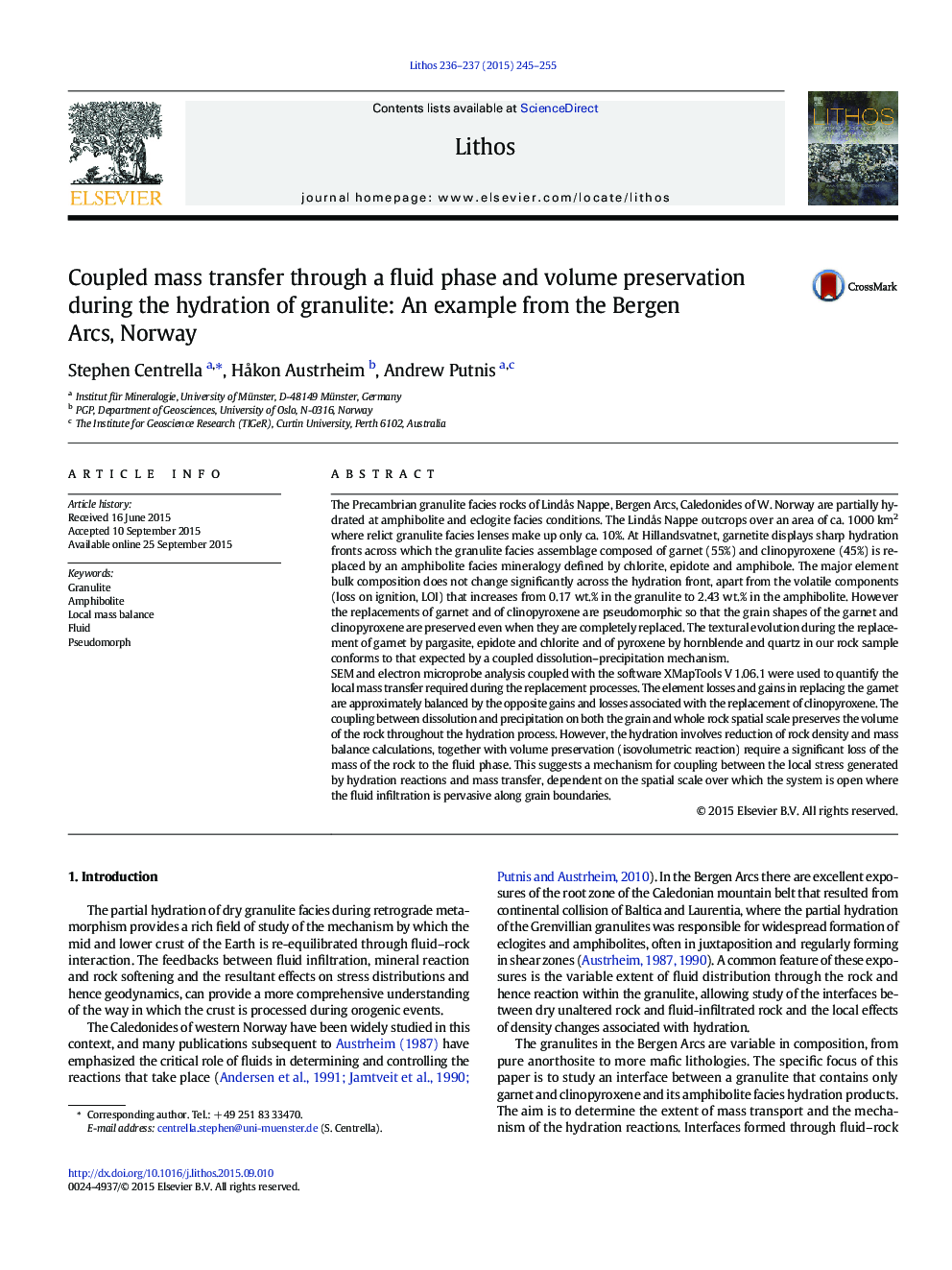| Article ID | Journal | Published Year | Pages | File Type |
|---|---|---|---|---|
| 4715608 | Lithos | 2015 | 11 Pages |
•We determined the mass balances associated to amphibolitisation.•Hydration reactions are isovolumetric•Estimated the mass loss to the fluid phase
The Precambrian granulite facies rocks of Lindås Nappe, Bergen Arcs, Caledonides of W. Norway are partially hydrated at amphibolite and eclogite facies conditions. The Lindås Nappe outcrops over an area of ca. 1000 km2 where relict granulite facies lenses make up only ca. 10%. At Hillandsvatnet, garnetite displays sharp hydration fronts across which the granulite facies assemblage composed of garnet (55%) and clinopyroxene (45%) is replaced by an amphibolite facies mineralogy defined by chlorite, epidote and amphibole. The major element bulk composition does not change significantly across the hydration front, apart from the volatile components (loss on ignition, LOI) that increases from 0.17 wt.% in the granulite to 2.43 wt.% in the amphibolite. However the replacements of garnet and of clinopyroxene are pseudomorphic so that the grain shapes of the garnet and clinopyroxene are preserved even when they are completely replaced. The textural evolution during the replacement of garnet by pargasite, epidote and chlorite and of pyroxene by hornblende and quartz in our rock sample conforms to that expected by a coupled dissolution–precipitation mechanism.SEM and electron microprobe analysis coupled with the software XMapTools V 1.06.1 were used to quantify the local mass transfer required during the replacement processes. The element losses and gains in replacing the garnet are approximately balanced by the opposite gains and losses associated with the replacement of clinopyroxene. The coupling between dissolution and precipitation on both the grain and whole rock spatial scale preserves the volume of the rock throughout the hydration process. However, the hydration involves reduction of rock density and mass balance calculations, together with volume preservation (isovolumetric reaction) require a significant loss of the mass of the rock to the fluid phase. This suggests a mechanism for coupling between the local stress generated by hydration reactions and mass transfer, dependent on the spatial scale over which the system is open where the fluid infiltration is pervasive along grain boundaries.
